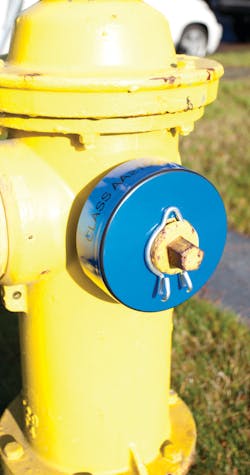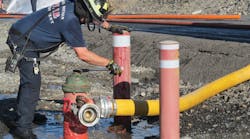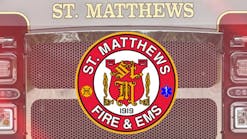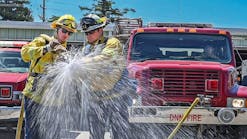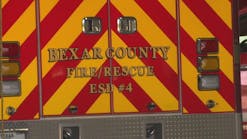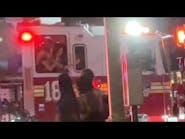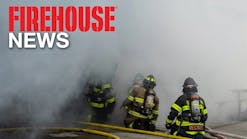Rural Firefighting Academy: The Rural Pressurized Fire Hydrant: What's It Worth? Part 2
Last month, we explained that without a clear understanding of flow rates from pressurized hydrants, firefighting operations that rely on them as a water source can turn into reckless gambles instead of calculated maneuvers. Measuring hydrant flow rate is virtually the only way to know the firefighting value of a water supply system. Now, we will review some planning considerations for hydrant flow testing.
Testing provides valuable information for pre-fire water-supply planning of target hazards in the test area. When collecting data, your goal is to produce a graph showing a hydrant water flow curve with a delivery rate in gallons per minute (gpm) available over a range of residual hydrant pressures.
Hydrant classifications
Fire hydrants can be broadly classified into two groups – standard and non-standard. A standard hydrant has one large-diameter outlet called the pumper or steamer connection. It also has two 2½-inch discharges called hose connections. Non-standard fire hydrants, which may be installed based on local needs, come in different configurations and may have multiple 2½-inch discharge openings. The typical hydrant is coupled to the water supply system piping through a six-inch water main connection, which is where the hydrant’s service valve is located.
• Markings – National Fire Protection Association (NFPA) pamphlet 291, Recommended Practice for Fire Flow Testing and Marking of Hydrants, 2013 edition, recommends color-coding for hydrants based on flow rate: 1,500 gpm or greater is light blue; 1,000 to 1,499 gpm is green; 500 to 999 gpm is orange; and less than 500 gpm is red. Color-coded covers installed on discharge caps are highly visible and are a good alternative to painting a hydrant; see Figure 1.
It is also a good idea to install flags or markers to locate hydrants in snow and to prevent damage from plows. Inoperable or out-of-service hydrants should be written up for repair and clearly marked or covered as shown in Figure 2.
• Testing – It is extremely important that hydrant testing be conducted by qualified and trained personnel. In many areas, the water utility is the Authority Having Jurisdiction (AHJ) over the water-supply system, so it is responsible for hydrant maintenance and flow testing. If this holds true in your community, contact the AHJ and have a fire department representative present for flow-test verification. Before fire department personnel take on the task of conducting hydrant testing, contact the AHJ for approval and obtain and follow two essential documents: NFPA 291 and the American Water Works Association’s M17, Installation, Field Testing and Maintenance of Fire Hydrants.
• Tools – To perform a hydrant flow test, you will need a typical hydrant bag, which contains a hydrant wrench, rubber mallet and spanners, along with a curb valve key to shut off a hydrant’s service valve if problems develop. You can perform a hydrant flow test with a standard pitot tube, but a suitable hydrant test kit is a good idea as calibrated equipment increases accuracy and ease of calculating flow test results.
The test kit shown in Figure 3 is equipped with a hydrant wrench, pitot tube, 2½-inch stream shaper and 2½-inch hydrant cap with calibrated gauge and bleeder. It also includes several pressure gauges and tables to easily calculate flow rates.
• Site inspection – The site must be inspected before testing, and you must plan for a large volume of water discharge and subsequent runoff. Do not test during freezing weather. Plan to provide vehicle traffic control if water streams will discharge into streets. Identify potential property damage from water streams and runoff, and take necessary precautions to eliminate problems. Control pedestrian traffic and do not let water streams come into contact with fire personnel or bystanders.
Testing procedures
Before testing, check hydrants for visible signs of problems and damage. These may include obstructions such as sign posts, fences or shrubbery; obvious strike damage; dented, ungreased or non-operational caps and threads; a stripped valve stem operating nut; or a leaking valve seat. With dry-barrel hydrants, check for a barrel full of water which indicates that the automatic drain is inoperable. Immediately document hydrant deficiencies and submit to the water utility company, as damaged hydrants must be repaired before testing.
Before using a hydrant wrench on any hydrant valve, locate markings on the hydrant to indicate whether its valve stem nut closes right- or left-hand. Right-hand hydrants close clockwise and left-hand hydrants counterclockwise when looking at the valve stem from above.
Note the location of the hydrant service valve curb box, usually between the hydrant and the water main, several yards away. The curb box provides access to the hydrant service valve and its cover or top should be near flush with grade level. If you encounter a problem with a hydrant during testing, open the curb box cover and use the curb valve key to close the service valve.
With obvious visible deficiencies in check, flush the hydrants through the large-diameter opening to remove any large debris from the hydrant barrel. When operating a hydrant valve during a flush, ensure that the valve opens and closes with appropriate physical force. If not, write the hydrant up as deficient.
• Planning – For flow-testing accuracy, use two fire hydrants – the test hydrant and the flow hydrant. Outfit the test hydrant with a test pressure gauge on one of its 2½-inch discharges. Open the hydrant valve and bleed air from the hydrant barrel. With the hydrant valve in the open position, use the test pressure gauge to record static and residual pressures. No water will flow from the test hydrant.
Next, take measurements from the flow hydrant, which should be downstream from the water source. Use a hand-held pitot tube to record water flow pressure from a 2½-inch discharge. Note that the final hydrant-water-curve graph information applies to only the test hydrant.
• Considerations – During testing, do not let residual pressure at the test hydrant drop below 20 psi while discharging water from the flow hydrant. This prevents backflow of contaminated water into the potable water supply system from a low-pressure area or vacuum that develops inside piping.
NFPA 291 states that to achieve satisfactory results, sufficient discharge at the test hydrant should cause a drop in residual pressure of at least 25% or to the demand necessary for firefighting. While the NFPA recommendation is optimal, if it is impractical to flow that amount of water, a minimum 10% residual pressure drop at the test hydrant is acceptable for a valid test result. For example, if our test hydrant has 80 psi static pressure, a 10% drop during the flow test would yield 72 psi residual pressure. A 25% drop would yield 60 psi residual pressure.
REFERENCES
• National Fire Protection Association 291 Recommended Practice for Fire Flow Testing and Marking of Hydrants, 2013 ed.
• American Water Works Association M17: Installation, Field Testing and Maintenance of Fire Hydrants
• Wieder, Michael, Fire Service Hydraulics and Water Supply, 2nd ed.
DOMINIC COLLETTI is the chief training officer at the Rural Firefighting Academy. The academy provides online self-paced learning programs for the small community firefighter using leading fire service instructors. He can be reached at LiveFireTraining.com. This month’s column is an excerpt from the Rural Firefighting Academy’s Pressurized Hydrant Analysis online course.
Dominic Colletti
DOMINIC COLLETTI is the chief training officer at the Rural Firefighting Academy. The academy provides online self-paced learning programs for the small community firefighter using leading fire service instructors. He can be reached at LiveFireTraining.com. This month’s column is an excerpt from the Rural Firefighting Academy’s Rural Firefighting Operations Online Course.
